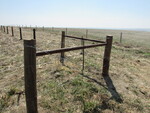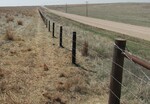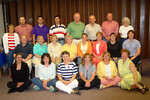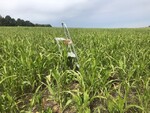by: Admin My Local Life
Photos By Cale Rieger, NRCS Natural Resource Specialist
Proper fence is needed for grazing livestock in a rotational grazing system. As mentioned before, a rest-rotation grazing system is essential for properly managing grazing systems in the western Kansas area of short grass and mid-grass prairie.
Many perimeter fences are 3 or 4 strands of barbed wire. Interior cross-fences are usually a single smooth wire. The interior fences have wider post spacing, are easy to construct and move if the number of paddocks changes. The more paddocks available increases the amount of rest each paddock receives in a rest-rotation grazing system.
In a typical rest-rotation system the paddocks are located so a central watering facility will serve from three to six paddocks. Fences need to allow ingress/egress to gates and cattle guards. Range topography needs to keep the following in mind when locating fences.
1. Animal safety
2. Livestock trailing
3. Access to watering facility
4. Erosion problems
5. Flooding potential
6. Ease of construction, repair, and maintenance
7. Avoid clearing of vegetation during the migratory bird nesting season
Here is a list of standards for barbed wire perimeter fence.
1. Use 12 1/2 gauge galvanized barbed wire
2. All wood posts must treated with an approved preservative except for osage orange
3. Minimum line post diameter is 3 inches
4. Post spacing is 16 1/2 feet for barbed wire fence
5. Average height of top wire is 38 inches
6. Wildlife friendly fences have top two wires at least 12 inches apart and bottom wire is 18 inches above the ground
7. Minimum post depth is 2 feet and height must be 2 inches above the top wire
8. Minimum corner post diameter is 5 inches
9. Minimum corner post depth is 3 1/2 feet
10. Using a steel T-post every 5th post will help prevent livestock death from lightning strikes
In summary, when planning a fence, always avoid irregular terrain as much as possible. Remember the impact a fence has on wildlife. Follow State and local laws. Remember livestock handling, watering, and feeding requirements.
Your local Natural Resources Conservation Service (NRCS) office has experienced planners that will help you design the fence you need. There is no charge for assistance. You may also be eligible to receive financial assistance through a State or Federal Cost-Share program. Your local NRCS County office will explain the programs available to you.
Click on photos to view slide show











